Pina, Saro and I start the day with a Granita and brioche, before a road trip to Caltagirone.
The city has been long famous for the production of pottery particularly maiolica and terracotta wares
. Nowadays the production is more and more oriented to artistic production of ceramics and terra-cotta sculptures. Other activities are mainly related to agriculture (production of grapes, olives and peaches).
The city's name derives from the Arabic "qal'at-al-jarar" ("Castle of pottery jars") - a name that attests to the antiquity of the pottery works which are still thriving. It has been inhabited since prehistoric times, as shown by the presence of two necropolises dating from the second millennium BC and by numerous other archaeological finds. It was later inhabited by the Sicels, pre-Roman population.The Arabs built a castle here that in 1030 was attacked by Ligurian troops under the Byzantine general George Maniakes, who have left traces of Ligurian language in the current dialect. The city flourished under the Norman and Hohenstaufen domination, becoming a renowned centre for production of ceramics.The city was almost completely destroyed by the 1693 earthquake earthquake. Many public and private buildings have then been reconstructed in Baroque style
.
Whilst in Caltagirone we climbed the colourful Maiolica tiles which decorate 142 steps of the main landmark of the city. This monumental Staircase of Santa Maria del Monte, built from 1608 in the old part of the town. The peculiarity is that each step is decorated with different hand-decorated ceramics, using styles and figures derived from the millennial tradition of pottery making. Once a year, on and around the day of the city's patron saint, Saint James and on the 25th of July, the staircase is illuminated with candles of different colours arranged in order to reconstruct an artistic drawing of several tens of meters. I couldn't imagine taking my groceries up theses stairs.
We visited the Church San Francesco d'Assisi (1236) rebuilt in Baroque style after 1693. The façade has two orders with marine symbols and a statue of the Immaculate. The dome is unfinished.
We visited the Bourbon Prison, which is now an interesting museum
.
We returned in the early afternoon to join Zia Graziella for lunch. After lunc I packed my bags as I was to spend a week at my cousin Fiorella and her husband Nuccio's house in Zafferana.
For dinner I joined Fiorella and Nuccio's friends, that I had met at Stazzo for a Pizza, followed by a gelato. The best thing about the Pizzas in Sicily is that they are thinned base and delicious toppings.
Fiorella showed me to what was to be my room for the week. It was spacious bedroom and due to being up in Zafferana Etnea it was much cooler.
A World of Ceramics
Saturday, August 20, 2011
 Caltagirone, Sicily, Italy
Caltagirone, Sicily, Italy
Other Entries
-
1Departure Melbourne - Kuala Lumpur - Rome
Aug 0614 days prior Melbourne. , Australiaphoto_camera1videocam 0comment 0
Melbourne. , Australiaphoto_camera1videocam 0comment 0 -
2Finally, joining the family.
Aug 0713 days prior Rome, Italyphoto_camera7videocam 0comment 0
Rome, Italyphoto_camera7videocam 0comment 0 -
3The Camera Comes Out To Play.
Aug 0812 days prior Acireale, Italyphoto_camera6videocam 0comment 0
Acireale, Italyphoto_camera6videocam 0comment 0 -
4Day trip to Catania
Aug 0911 days prior Catania, Italyphoto_camera12videocam 0comment 0
Catania, Italyphoto_camera12videocam 0comment 0 -
5Beach Day at Funni Musca.
Aug 1010 days prior Noto, Italyphoto_camera12videocam 0comment 1
Noto, Italyphoto_camera12videocam 0comment 1 -
6From the Infinity Pool to the Party!
Aug 119 days prior Santa Tecla Di Acireale, Italyphoto_camera5videocam 0comment 1
Santa Tecla Di Acireale, Italyphoto_camera5videocam 0comment 1 -
7Hanging around with Saro and Pina.
Aug 128 days prior Catania, Italyphoto_camera4videocam 0comment 1
Catania, Italyphoto_camera4videocam 0comment 1 -
8Oh yes, Granita, Granita, Granita!!!
Aug 137 days prior Aci Castello, Italyphoto_camera5videocam 0comment 0
Aci Castello, Italyphoto_camera5videocam 0comment 0 -
9Freezing waters of Gole Alacantara
Aug 146 days prior Francavilla di Sicilia, Italyphoto_camera6videocam 0comment 0
Francavilla di Sicilia, Italyphoto_camera6videocam 0comment 0 -
10Swimming in the Ionian Sea
Aug 155 days prior Stazzo, Italyphoto_camera3videocam 0comment 0
Stazzo, Italyphoto_camera3videocam 0comment 0 -
11Road Trip to Ragusa Ilba
Aug 164 days prior Ragusa Ibla, Italyphoto_camera15videocam 0comment 0
Ragusa Ibla, Italyphoto_camera15videocam 0comment 0 -
12To Shop or Not To Shop, That is the Question!
Aug 173 days prior Acireale, Italyphoto_camera6videocam 0comment 0
Acireale, Italyphoto_camera6videocam 0comment 0 -
13From Beach to Mountain and into a Cock Bar
Aug 182 days prior Castelmola. , Italyphoto_camera9videocam 0comment 2
Castelmola. , Italyphoto_camera9videocam 0comment 2 -
14Hiking Etna.
Aug 191 day prior Nicolosi, Italyphoto_camera16videocam 0comment 4
Nicolosi, Italyphoto_camera16videocam 0comment 4 -
15A World of Ceramics
Aug 20 Caltagirone, Italyphoto_camera13videocam 0comment 0
Caltagirone, Italyphoto_camera13videocam 0comment 0 -
16Welcome to Sicily Peter Selar
Aug 211 day later Zafferana Etnea, Italyphoto_camera2videocam 0comment 1
Zafferana Etnea, Italyphoto_camera2videocam 0comment 1 -
17Good Company and Good Food.
Aug 222 days later Santa Tecla di Acireale, Italyphoto_camera2videocam 0comment 0
Santa Tecla di Acireale, Italyphoto_camera2videocam 0comment 0 -
18Peter visits Acireale
Aug 233 days later Acireale, Italyphoto_camera17videocam 0comment 1
Acireale, Italyphoto_camera17videocam 0comment 1 -
19Temples of Gods
Aug 244 days later Agrigento, Italyphoto_camera21videocam 0comment 1
Agrigento, Italyphoto_camera21videocam 0comment 1 -
20Chill Out & Shopping
Aug 255 days later Acireale, Italyphoto_camera4videocam 0comment 0
Acireale, Italyphoto_camera4videocam 0comment 0 -
21Checking out the sights with Aunty Mary & Cousins
Aug 266 days later Aci Trezza, Italyphoto_camera20videocam 0comment 0
Aci Trezza, Italyphoto_camera20videocam 0comment 0 -
22Time Is Running Out!
Aug 277 days later Acireale, Italyphoto_camera12videocam 0comment 1
Acireale, Italyphoto_camera12videocam 0comment 1 -
23Delights of Taormina
Aug 288 days later Taormina, Italyphoto_camera13videocam 0comment 4
Taormina, Italyphoto_camera13videocam 0comment 4 -
24Transit to Montepulciano
Aug 299 days later Montepulciano, Italyphoto_camera25videocam 0comment 0
Montepulciano, Italyphoto_camera25videocam 0comment 0 -
25The Journey Begins
Aug 3010 days later Pienza, Italyphoto_camera22videocam 0comment 0
Pienza, Italyphoto_camera22videocam 0comment 0 -
26Immersing The Body in the Thermal Springs.
Aug 3111 days later Bagno Vignoni, Italyphoto_camera11videocam 0comment 1
Bagno Vignoni, Italyphoto_camera11videocam 0comment 1 -
27From Thermal Springs to Chants in an Abbey.
Sep 0112 days later Montalcino, Italyphoto_camera15videocam 0comment 4
Montalcino, Italyphoto_camera15videocam 0comment 4 -
28Tranquility and Peace.
Sep 0213 days later Buonconvento, Italyphoto_camera8videocam 0comment 0
Buonconvento, Italyphoto_camera8videocam 0comment 0 -
29Beautiful Abbey and Gardens
Sep 0314 days later Buonconvento, Italyphoto_camera13videocam 0comment 0
Buonconvento, Italyphoto_camera13videocam 0comment 0 -
30Three Remain, Eight Moved On.
Sep 0415 days later Murlo, Italyphoto_camera22videocam 0comment 0
Murlo, Italyphoto_camera22videocam 0comment 0 -
31Beautiful Siena
Sep 0516 days later Siena, Italyphoto_camera10videocam 0comment 0
Siena, Italyphoto_camera10videocam 0comment 0 -
32Another day of Churches!
Sep 0617 days later Siena, Italyphoto_camera11videocam 0comment 2
Siena, Italyphoto_camera11videocam 0comment 2 -
33Goodbye Siena, Hello Milano.
Sep 0718 days later Milan, Italyphoto_camera2videocam 0comment 0
Milan, Italyphoto_camera2videocam 0comment 0

 Caltagirone, Sicily, Italy
Caltagirone, Sicily, Italy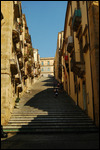
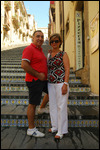
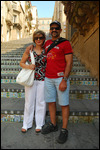


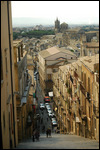
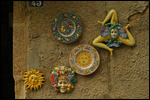
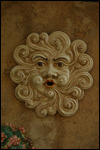
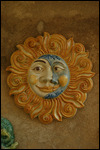
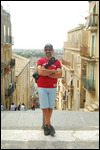
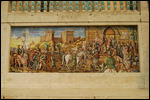
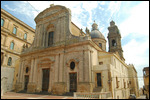
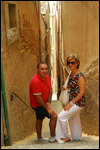
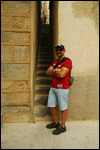
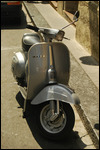
2025-05-22